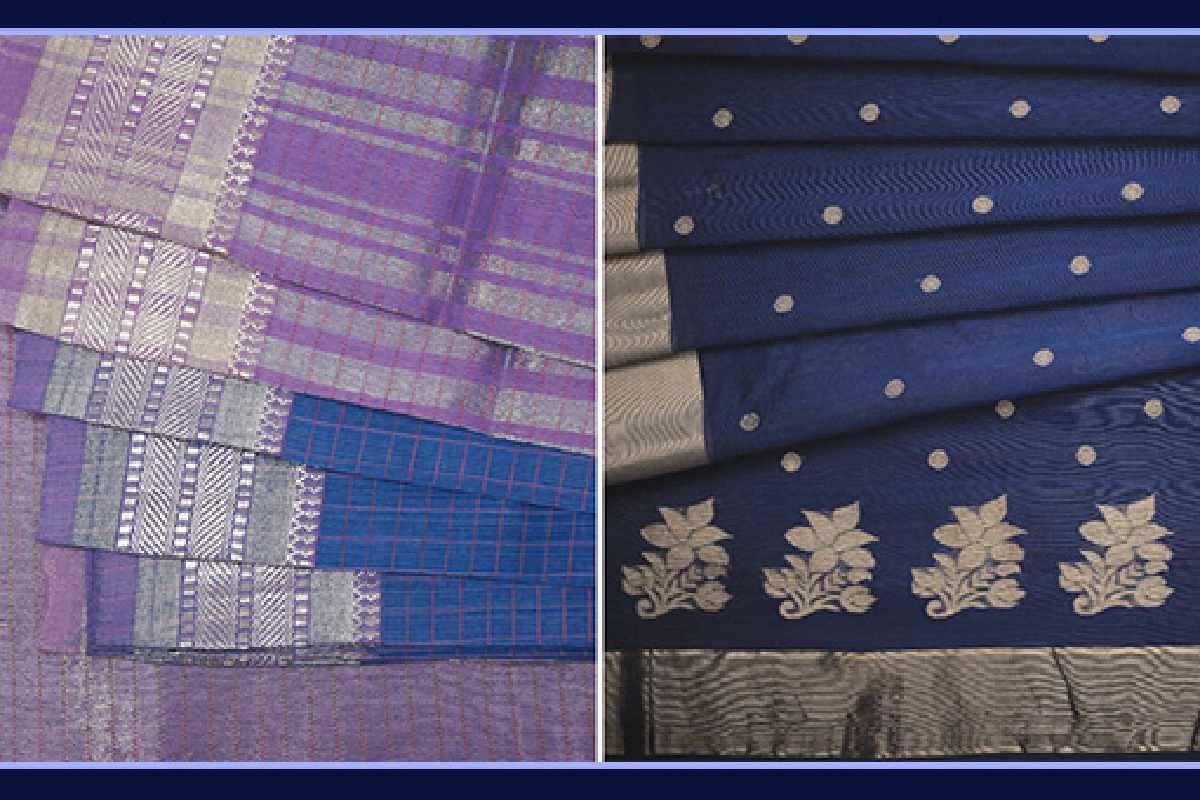Maheswari Sarees And Chanderi Sarees – Given the long list of sarees our sartorial haven boasts, it is not uncommon for someone to find themselves in a puzzle of names. Each weave originating in India boasts a distinctive history, an appeal unique to it, and a laborious tale of making it. In this blog, we will explore what sets the Maheswari and Chanderi sarees apart from one another in detail.
Table of Contents
Fabric
Maheshwari sarees are crafted from a blend of cotton and silk, resulting in a fabric that is lightweight, airy, and breathable. On the other hand, Chanderi sarees are traditionally made from a blend of silk and cotton or pure silk, giving them a slightly heavier and more luxurious feel.
Place of origin
Maheshwari sarees hail from the town of Maheshwar in Madhya Pradesh, where they have been woven for centuries by skilled artisans. Chanderi sarees, on the other hand, originate from the town of Chanderi in Madhya Pradesh, known for its rich textile heritage and intricate weaving techniques.
Making process
The making process of Maheshwari sarees involves intricate handloom weaving techniques, with motifs inspired by nature, geometric patterns, and traditional designs. Chanderi sarees are also handwoven using traditional techniques, but they are characterised by their fine zari work, sheer texture, and intricate embroidery, often featuring motifs like peacocks, floral patterns, and geometric shapes.
Ease of carrying
Maheshwari sarees are known for their lightweight and comfortable feel, making them easy to drape and carry throughout the day. They are ideal for both casual and formal occasions, offering a blend of elegance and comfort. Chanderi sarees, while slightly heavier due to the use of silk, still offer ease of carrying due to their soft and breathable fabric. They are often chosen for special occasions and events where a touch of luxury is desired.

